Greetings!
And welcome to a new travelogue and the start of my retelling of what was perhaps my greatest adventure so far, a massive overland trip from Japan to Bulgaria. It’s called ‘Across Asia With A Lowlander’ because it charts a journey that was a). across Asia and b). done mainly with the Lowlander who is a long-term travelling companion of mine. He however, does not enter the scene until we hit Seoul so in the meantime it’s just little me, being waved off from my home of two years, Toyama, and heading across the sea to Pusan, the second-city of South Korea.
Incidentally, since the start of this piece talks about my memories of living in Japan, why not check out my Japanese Musings, written about that time.
And then embark on the big trip!
Keep travelling!
Uncle Travelling Matt
Across Asia With A Lowlander
Links to all parts of the travelogue
Book 1: Embarking Upon a New Korea
1e: Seoul, Incheon and Across the Yellow Sea
Book 2: Master Potter does Fine China
Book 3: Steppe to the Left, Steppe to the Right…
BOOK I
Embarking Upon A New Korea
(Where a Midlander meets a Highlander and a Lowlander and goes to the Land of No Man)
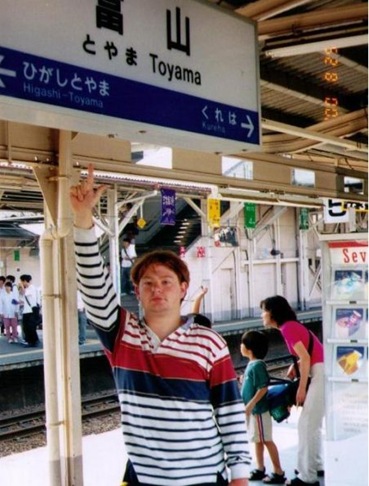 The start of the journey: Toyama Station
The start of the journey: Toyama Station
13th July, 2002 - Toyama, Japan
The automatic doors slid shut and with a jolt the train started to move. Eight pairs of hands started to wave frantically outside. One pair reciprocated from inside the carriage. I sat down, facing back towards the station and watched as the figures on the platform grew smaller and then disappeared behind the footbridge. I turned and switched my attentions to the grey city outside, its blocks and houses passing by the large glass window. And then, with a rumble, we were on the long girder bridge that spans the Jinzu River, mighty and fast-flowing in winter, but now, in the height of summer, little more than a pathetic trickle. Straight after the bridge ended, the line to Takayama and Gifu curled away to the right; the line that would, fifteen miles or so further on, pass near my home and into the small town that had two years ago welcomed me into its bosom. Then, with a bang, we entered the blackness of Kureha Tunnel.
It seems strange now, but starting that journey was more like an end than a beginning. I was not looking forwards, to endless train journeys across the steppe, blue-tiled mosques, militarised borders, noodles, fried rice, plov, borsch, Shopska salad, red-star topped buildings and Great Walls ordered by long-dead dictators. That was all to come no doubt, but I thought not of it. Instead my mind dwelt on tree-covered mountains, soaking in mineral springs, drinking parties with colleagues, karaoke nights with ex-pat friends, walking my bicycle up steep slopes in order to have a Vietnamese meal in a factory amidst rice paddies, an Italian nun in a Catholic church full of Filipinos, a Buddhist ex-schoolteacher from Stoke on Trent, a lovable pair of bickering Russians, vast dams, high waterfalls, ski slopes, excited schoolchildren, tired teachers and mind-numbingly boring conversations about what food I like to eat. The adventure was not beginning, it had just finished.
‘What the hell is this guy on about?’ you ask. ‘I’m reading this ‘cos I want to hear all about the DMZ, the Kremlin, the Registan and the Great Wall.’ I beg to apologise, all that will come, I promise. A little later. In the meantime however, please let me look back.
Toyama Railway Station, on the Hokuriku Line, in the centre of Japan is an unusual place to start a journey. Or at least it is for most of us. But for me it was not. This was far from being the first journey that I’d started from there. It is probably however, the last, and that is why I beg a moment to reflect. Almost two years to the day before, I had arrived in that city, and in the time in-between it had become as much a home to me as anywhere can, barring the village of my childhood. In those two years, its children had shook my hand and tried to learn my language, its shopkeepers had greeted me, its police had presented me with parking tickets and speeding fines and its citizens had excused my drunken World Cup celebrations.
But that era was now at an end. I’d been through some seemingly endless goodbye ceremonies, talked with the Australian lady who was to take over my job, sent my stuff on and drank goodbyes with my friends. And then finally, I’d waved goodbye on Toyama Station to my boss Tonami, colleagues Mariko and Keichi (and the latter’s daughter), my American friend Torin and my Japanese friends the Senda family. It was over.
As the train burst out of the tunnel I got up and moved to the empty seat facing me. Now was the time to look forward, not back.
And thus, the past out of the way, what had I got coming? Well firstly a journey, far longer than any I had undertaken before, from the furthest reaches of Asia, back to the continent of my birth. A journey by land and sea that would (hopefully), take me through Japan, to South Korea, then China, and after that Kazakhstan and Uzbekistan, before returning back into Kazakhstan and then onwards, north into Russia, before turning southwards again, and riding the rails through the grain fields of the Ukraine, and then on into Romania before crossing the Danube to Bulgaria where, (for a few months at least), I would halt, as I was scheduled to take on a teaching position there in the port city of Varna, early in September. So, that meant nine countries in under two months, all by land and sea, and not an aeroplane in sight. A challenge, yes indeed, but thankfully I was not to undertake it alone, (well the majority at least). In Seoul, three days hence, I was to meet a Dutchman, the Lowlander, whom I know well and who would accompany me as far as Moscow. And as he leaves, another arrives, my brother, the Sibling, and a female friend of his whom I vaguely remember coming out of a bedroom once at home. They were to keep me from loneliness all the way to Varna. Or at least, that was the plan.
But now I was alone, sat on a speeding Thunderbird express train, thundering towards the sprawling metropolis of Osaka. I opened the sushi that Tonami and Mariko had bought for me at the station and gazed out of the window. The day was yet young, (the Thunderbird having departed Toyama at 0728), and mist lay in layers on the forested slopes of the mountains. At times the railway line was accompanied by the concrete pillars of a new Shinkansen (Bullet Train) trunk route, which presently under construction, will no doubt have relegated this railway to local services and freight should I ever return. Progress marches swiftly on, or at least it does here in Japan, despite the recession. Under one section of the line, a group of regimented workers did their morning exercises under the eagle eye of their foreman. I had a quiet chuckle to myself since I’d been commanded to do the very same routine at a kindergarten that I used to teach at. Japan certainly is a different country and they start cultivating those differences at an early age.
Whilst on the surface the Japan that I was passing through – Takaoka, Kanazawa, Komatsu (you must know the digger company?), Kaga-onsen (watch out for the enormous gold Buddhist Goddess of Mercy on the right), Fukui – looks not altogether too different from the equally affluent West, it seems to me, just under the surface, to be a country as mentally far-removed from my own as exists on earth. Even the new railway line being built by my side can demonstrate that. In Britain, after years of political wrangling, arguments and complaints from the French, the high-speed rail link from London to the Channel Tunnel had still not been started, yet the Japanese manage to commence and complete mammoth-sized projects that make London to Folkestone seem insignificant, and they do it on a regular basis. Is it a matter of money? Recession-hit Japan versus the Buoyant Britain of Blair? I don’t think so. It’s philosophy. The Japanese build for different reasons. Of course both countries need fast railways, but the British build them because they can make money from them. The Japanese however do it for prestige, to assist business and to provide work for the construction companies and their employees. It is even said that these huge projects are contributing to Japan’s well-publicised and long-running financial difficulties, as they are not a natural result of the market. Perhaps the analysts are right on this one? I can believe it.
‘But that’s not a Japanese thing!’ I hear you economists declare. ‘That’s socialism, we used to do that in the West, and you’ll be seeing a lot more of it when you travel through the People’s Republic of China.’ Well, yes, fair enough, you’re correct on all counts. Except that there’s one thing that you forget. Japan is not socialist, nor has it ever been. It’s not even social democratic. Ever since the culmination of the Second World War, the far right Liberal Democratic Party has firmly held the reigns of power, with only a couple of minor interruptions. It is the party of capital and business that is implementing these policies. And the opposition Social Democrats, should they ever get in power for any length of time (unlikely), will they do any different? (Extra unlikely). Japan is a nation of consensus and a nation that often blurs Western notions of distinction or principle.
I arrived at Shin Osaka in seemingly no time at all. The Hokuriku Shinkansen may be under construction, but the present Thunderbird service leaves most of the world’s express trains standing: over three hundred kilometres in a little over three hours. That’s not bad going by anyone’s reckoning.
Shin Osaka means ‘New Osaka’ and it’s not the city’s main railway station, or even in the centre of town. It lies in a nondescript suburb and was built specifically to serve as an interchange between JR’s ‘normal’ trains and the flagship Shinkansen service. The Thunderbird may have been fast, but I’d seen nothing so far. Anyway, for changing trains had Shin Osaka been built and so change trains I did, moving upstairs from the ground level normal platforms to the elevated ones that served some of the most advanced trains on earth. I pushed my ticket through the barrier and then got on the escalator that led me to my next carriage of transportation, the Railstar.
The first Shinkansen was completed in 1964 and it ran between the capital, Tokyo, to Japan’s second-largest metropolis, the Kansai conurbation which consists of Osaka, Kyoto, Nara and Kobe. The idea behind building a high-speed railway was to reduce congestion on the existing lines and highways, and to enable trains to compete with air services over this well-used route. The line was named the Tokkaido (East Sea Way), after the famous ancient road which linked the two capitals, Kyoto and Tokyo, and the idea worked. Ever since opening, the Shinkansen trains, though pricy, have been well-patronised and the image of a bullet train speeding through the rice paddies with Mount Fuji in the background has become the definitive image of modern Japan.
The Japanese did not stop there though. Ever since the Tokkaido Shinkansen opened, more and more lines have been constructed resulting in a fast, reliable and punctual network that covers the island of Honshu and spills over onto Kyushu. And it’s not over yet. The Hokuriku Shinkansen is the next chapter in the story, and there is even talk of a sea-tunnel to Korea after that.
The Railstar that I was to ride on would be travelling along the San yo, a continuation of the original Tokkaido line from Osaka and then onto Kobe, Hiroshima and finally Hakata on Kyushu. I’d travelled only as far as Hiroshima and the whole journey, six hundred and twenty-three kilometres in length, would take less than three hours. Now there’s technology for you! As I sat down and relaxed in the comfy airline-style seat however, I came to muse upon how much of an improvement on our lives this actually is. As a child I’d always dreamed of travelling on a bullet train, yet the first time that I had done so, back in 2000, on a trip to Tokyo, I remember being extremely disappointed. The interior of the train that was built to compete with aeroplanes was rather too much like an aeroplane itself for my liking, and getting a window seat was something of an impossibility. But even if I had, like with those aforementioned flying-machines, what would there have been for me to see? Despite travelling through one of the most spectacular regions of the country, the ramrod straight Shinkansen line only offered snippets of a view in-between countless indeterminably long tunnels. And then it was all over so fast! Maybe I got there on time, and a very good time at that, but I for one like to be able to savour my journeys a little more.
But there again, I am a bit of a daydreaming, romanticising old sod at times.
So, as we whizzed through the cities of Western Honshu, I relaxed, took out D. H. Lawrence’s Lady Chatterley’s Lover, and immersed myself in the romantic intrigues of early twentieth century Nottinghamshire. Not that I was overly impressed mind, Lawrence is an inferior Arnold Bennett at best in my mind, despite what the critics say, but it passed the time.
I did put the book down however as we pulled out of Hiroshima. From here on it was Virgin Territory for me all the way to Bucharest, and my eyes sparkled as I glanced out over previously unseen rice fields before plunging into yet another tunnel. The journey had begun! I got out my journal with the intention of scribing down the events of the day so far, but alas, I’d forgotten to pack a pen in my small travel bag, all the biros were deep inside the confines of my rucksack. I asked the man besides me if he perhaps had one that I may borrow, but he replied in the negative, uncharacteristically abruptly for his race. My opinion of him however, was more than redeemed when he got off at the next station and gave me the mechanical pencil that he’d been filling a quiz in with. I’ve found that the Japanese, like all of us, have many characteristics, some good and some bad. Undoubtedly among the former however, is their unbridled generosity.
I never discovered when we left Honshu and entered the large southerly isle of Kyushu, (through one of the innumerable tunnels no doubt), but before I knew it, the train was pulling into the Hakata station, where it and I were to terminate. I left the Boeing-esque carriage and headed down the escalator into the concourse where I dined upon that most popular and average of snacks in Japan, curry rice. Then I walked outside and caught the bus to take me to the ferry terminal from whence my boat to the Korean port of Pusan would depart.
I decided to take the bus to the terminal rather than the infinitely more expensive taxi, (taxi fares start at around five Euros in Japan and the fares rack up quickly), since I had some time to spare, though I almost lived to regret that decision. For a start, I had some difficulty in locating the stop from whence the ferry terminal buses departed, (it was on the opposite side of the street from the bus station itself), and once located I had to wait forever for the bus itself. Whilst waiting I surveyed the other passengers and was pleased to discover that I could quite easily discern the Koreans with their rounder faces and different fashions. These were, (apart from my friend Torin at the station, and my ugly mug in the mirror), the first ‘foreigners’ that I’d come across on the journey, though doubtless there would be many more. When the bus eventually did come however, my waiting woes were far from over. At the first set of traffic lights the vehicle halted and didn’t start moving again once they turned to green. The reason behind this soon became clear. From around the corner of the street came the gaily-coloured floats of a matsuri or festival, pulled through the streets to the delight of all but me. Any other time I too would have loved to stop and view the proceedings, but today I had a boat to catch!
Luckily we arrived at the terminal in time and I spent my last yen on a drink and a biro at the store before heading through customs where I symbolically handed in my Japanese residency card in and got a Final Departure stamp in my passport.
I then headed down the steps to the tiny railway-owned craft which would ferry me onwards to Asia’s mainland.
Inside, I was seated by a smiling assistant, next to an elderly lady who turned out to be Korean, but spoke excellent Japanese. The fact that she used to live there turned out to be the reason why. I asked if she still did, but she replied in the negative. This trip, undertaken with her friend who was sat asleep next to us, was just to visit onsens.
Onsens are a Japanese phenomenon. Being a (geologically-speaking) young area of the world, the earthquake-prone and still-forming Japanese archipelago is filled with mineral springs which spew out hot and healthy water at an astonishing rate. Since ancient times, the canny residents have realised the potential of such water for recreation and as a treatment for ailments, and so it was that the onsen, or ‘hot spring resort’, came about. The original onsens were located in natural rock pools near to the springs, but nowadays these are few and far between. However, virtually every spring now has a nearby complex where the waters are pumped and where the locals lounge in baths or rock pools of a more artificial nature. Often there’s more than just pools too, saunas, Jacuzzis and other mineral water based activities complement the scene in a good onsen. It was to some of these establishments that my sailing companion had been to Japan to sample, and why not? It’s healthy, in Japanese terms relatively cheap, and extremely relaxing. I asked her if Korea also had such complexes.
“Oh yes, many, but in Korea we say oncheon.” I made a note of that. Oncheon would probably be something worth investigating.
Rakkyokan Onsen, Osawano: one of my favourites
My sea voyage was not particularly lengthy, and before long the port city of Pusan loomed up ahead, a little akin to Hong Kong, with its tall apartment blocks jostling for space on the steep slopes. My companion pointed out all the districts whilst the boat entered the harbour, and having stopped, we departed amicably, taking our different queues in the passport check.
I had no accommodation arranged for Pusan, only a ticket onwards for the following day, but the guidebook said that there were plenty of cheap hotels near to the railway station, which suited me since that’s where I’d be departing from later on, so I walked to the nearest Metro station and caught a train to the Central Station stop.
Emerging from the darkness of the Metro station I found myself to be in a large square that conveniently had a tourist information booth clearly marked in the centre, built presumably to cope with the huge numbers of visitors to the city during the World Cup which had only just finished. So, there I entered and ten minutes later I was booking into an establishment twenty metres off the square for the reasonable sum of twenty-five thousand won a night.
By this time I was of course feeling decidedly tired (up at six), dirty (no shower all day), and peckish (only some sushi and curry rice as sustenance for over twelve hours), so after depositing my bags, showering to satisfaction and changing attire, I took myself out of the hotel in search of a bite to eat. The area on the far side of the square looked lively, so I headed there and soon found out why. Pusan is a port and like all ports it has a sizable red-light district, which turned out to be the neighbourhood that I’d just stumbled into. Still, red-light districts have their uses, (and not just the obvious ones!), and this one, like most, contained many a good restaurant in which to feast. I had decided not to attempt Korean food that evening, but couldn’t settle on what to go for until I spied a Filipino restaurant. Ever since there, Filipino food has been a big favourite of mine, far superior to the oft-praised cuisine of Japan, Vietnam and Indonesia in my opinion, so I headed inside and ate dishes from Ilocos, Mindanao and the Visayans to my heart’s content, washed down with some ice-cold San Miguel fresh from Manila. It was magic and it was what I needed. I left full and happy and made my way to an Internet Café to establish Korean contact with the world, whilst my stomach settled, before returning to the hotel and blissfully slipping into a deep sleep.
Next part: 1b: Pusan
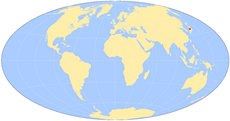
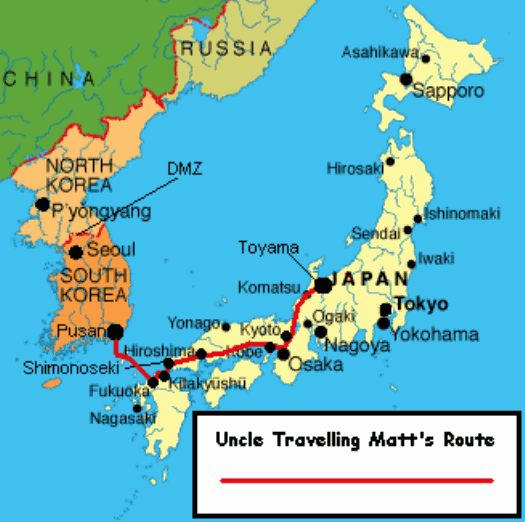
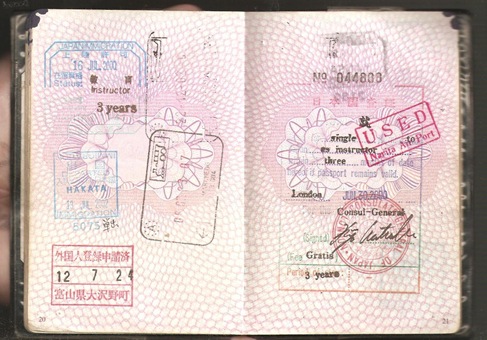
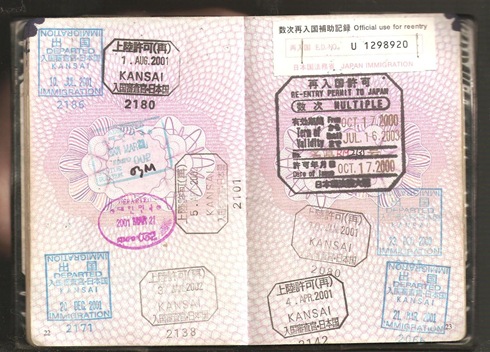
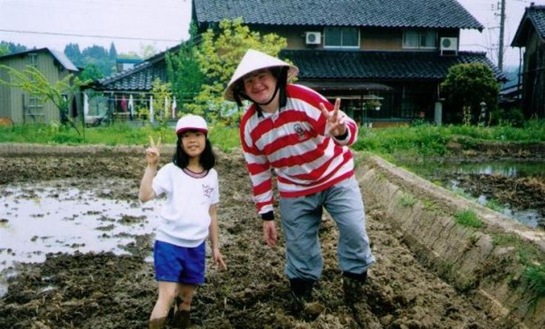
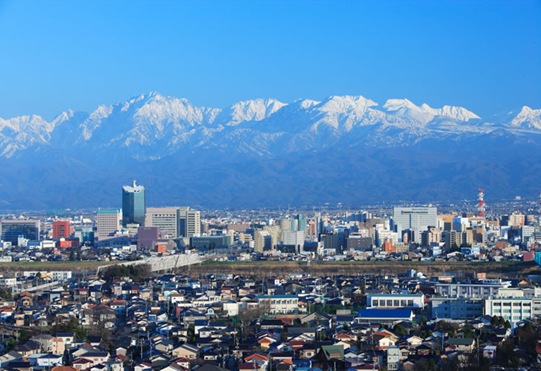
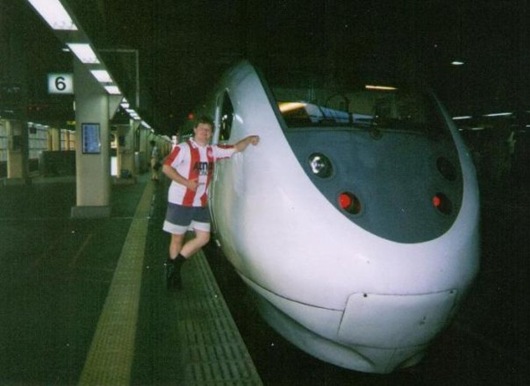
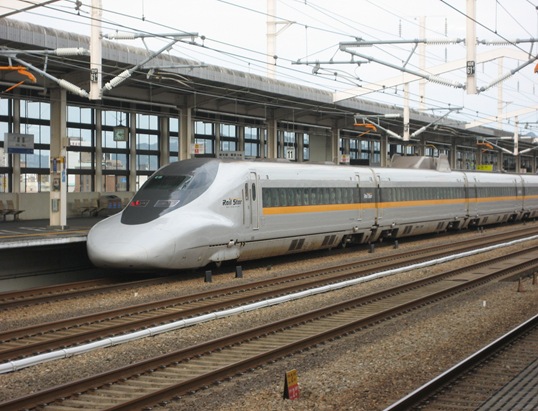
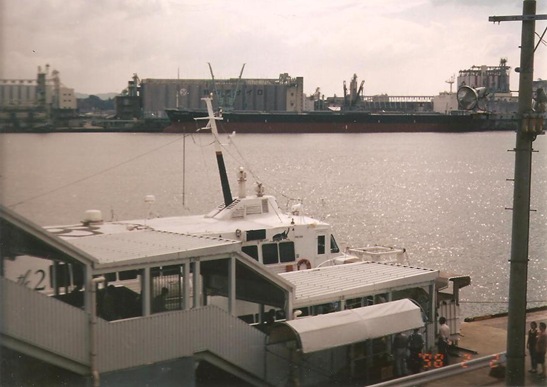
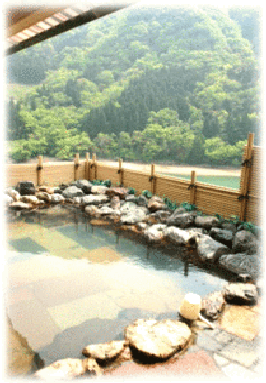
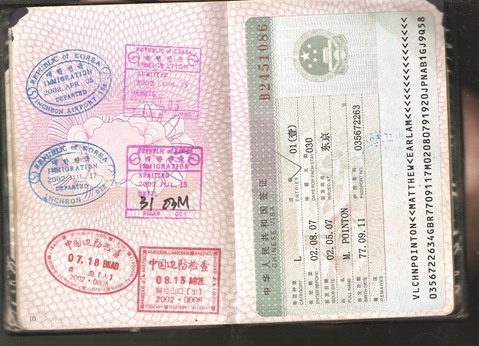
I remember once that I was trying to get to Shin Osaka, but the local train I was taking would not go directly there so I had to transfer. However, I could not remember which stop the transfer was, so I got off and asked the JR clerk what station the transfer to shinosaka was. He looked at me with a questioning look on his face and said "shinosaka?" I couldn't believe he didn't know what I was talking about because shinosaka is a huge station. So I said "shinosaka". Once again he said, "shinosaka?!?" Now, getting steamed, I said "Shinosaka, shinosaka" Finally he said, "Ah, shiN OUsaka?" I just looked at him with resignation and said, "hai, shiN OUsaka."...
ReplyDelete